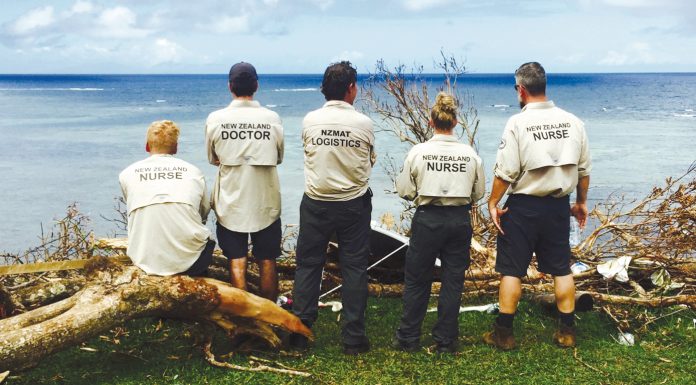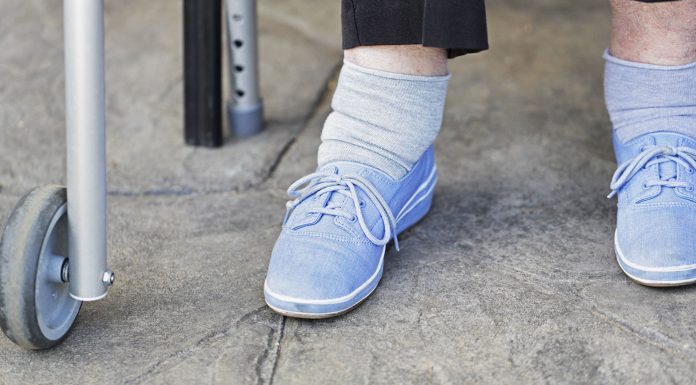 Jossel Ebesate is a charge nurse at a state-funded tertiary hospital that serves not only Manila’s poor but the country’s poor.
Jossel Ebesate is a charge nurse at a state-funded tertiary hospital that serves not only Manila’s poor but the country’s poor.
His aunts and uncles in the US regularly urge him to join them, but the orthopaedic ward nursing supervisor at Manila’s Philippine General Hospital always answers, “I’m more needed here”.
When the nurse from the provinces first started at PGH (as the 100-year-old hospital is most commonly called) he was introduced to the local branch of the Alliance of Health Workers – a national organisation of health workers’ unions. “It was an eye opener to the real situation in the country”. And he has been a passionate advocate for improving his nation’s health system ever since.
The decision to stay nursing in the Philippines is not a light one to make. Few nurses around the world would say they are paid what they worth but in the Philippines the reality is that many get paid a pittance and there is an expectation, even tacit encouragement, that a high percentage will nurse overseas. And the nation’s economy benefits majorly from the foreign exchange sent home by the hundreds of thousands of nurses who are pushed or pulled to work abroad.
Dr Teresita Barcelo, the former president of the Philippine Nurse Association, says for nurses working in the private hospital sector – roughly half of the nursing workforce – the only mandate is the minimum wage so nurses can be paid the same as a hospital janitor. This means that a nurse working in a small private hospital in Manila – who may have invested around one million pesos in getting their four-year degree – can legally be paid 481 pesos (just under US$10) per day.
Dr Cora Anonuevo, a member of the Philippine Board of Nursing, says that some nurses working under local government health units can even be paid half that rate – far below the wage rates mandated for the regions – on the pretext that they are engaged as ‘contractors’.
The best pay and working conditions are for state-funded hospitals like PGH. For example, the PGH nursing workforce, unlike in the often physician-owned private hospital sector, is led by an independent director of nursing. Barcelo says nurses have a voice at PGH as doctors are their colleagues and not their lords. “Unfortunately too often doctors here [the Philippines] think they are the kings of hospitals.”
Working conditions like this, and the special mandated pay rates, lead to long waiting lists of experienced nurses wanting to work at the 1,500-bed teaching hospital, which is run by the neighbouring University of the Philippines (UP) in Manila.
But Ebesate, who chairs the All UP Workers Union’s health and occupational safety committee and its research and education committee, says even at PGH a staff nurse’s pay falls short of providing a comfortable living for a family. One think tank estimates that to support a family of five or six in Manila costs about 1,000 pesos a day (i.e. 30,000 pesos a month) but the PGH nurse salary is around 19,600 pesos per month.
Walking tour of hospital catering for Manila’s poorest
 PGH is also a drawcard for nurses because the premier teaching hospital delivers best practice care.
PGH is also a drawcard for nurses because the premier teaching hospital delivers best practice care.
After being given a quick walking tour through the hospital built by the Americans in 1910, you realise that the state-funded hospital delivers that care on a shoestring budget bolstered by charitable donations.
The wards are immaculately clean, organised and – the visit is in the late afternoon – remarkably calm and quiet with no bells ringing or harried nurses rushing down corridors. Which is surprising given the sheer numbers of beds and people packed into the 100-year-old hospital and how comparatively few nurses there are to care for them.
The trade-off for working in a government hospital is much, much higher nurse-to-patient ratios than in the private hospital sector. Ebesate’s orthopaedic ward has a 60-bed capacity and on a normal day shift will have four nurses caring for about 56 patients. Step into an adult orthopaedic room and you’ll soon see what helps to make this possible. Nearly every patient in the eight to 10 beds – crammed into a space where most New Zealand hospitals would have three or maybe four – has family at the bedside.
Ebesate says the hospital allows at least one immediate family member to be with the patient 24 hours a day. He stops to talks to one patient, Joselito Obena (see photo), a hit and run victim from north of Manila, whose main concern is not having any family to support him.
PGH’s nurses are also supported by nursing attendants (like HCAs) and utility workers (orderlies) but if they were working at one of Manila’s private hospitals their wages might be lower but their patient load would be much closer to the norm in a New Zealand hospital. Also – in a country where the gap between rich and poor can be staggering – the private hospitals serving the privately insured include glossy facilities with private rooms and technology that would not look out of place in Chicago or Los Angeles.
With a quarter of the nation’s population living in poverty, the national health insurance programme PhilHealth was set up in 1995 with a mandate to “serve as the means for the healthy to pay for the care of the sick and for those who can afford medical to subsidise those who cannot”.
The aim is universal coverage of the nation’s poor. But Ebesate says that only 30 per cent of PGH’s patients – a hospital serving the poor of a city believed to have the world’s largest homeless population, with millions living in slums and unknown numbers living on the street – are covered by PhilHealth.
“The problem is that most often the ones who were identified [by PhilHealth] as ‘indigent’/entitled families are also supporters of the local politicians,” says Ebesate. “That’s why there are still people in the streets who are not covered by our social insurance.”
In the past two years, Ebesate says, the previous government has provided a direct subsidy of 50,000 pesos for ‘indigent patients’, after a successful Supreme Court challenge by some lawyers saw funding from a ‘pork barrel’ slush fund for senators and congressmen redirected to health. Just before Christmas the new President Rodrigo Duterte announced he would boost Department of Health funding in 2017 to cover the hospital and medical bills of the poor who are not PhilHealth members.
But that is not enough to deliver premiere care for all the needy – a fact that is brought home when we enter a large, old-school, open paediatric ward. The walls are brightly painted with characters from kids’ animated movies, but it is also packed, including little babies on ventilators, because the paediatric and neonatal ICU units are full to capacity.
On the way to PGH’s emergency room (ER), Ebesate introduces the ER nurse supervisor who shares that it is “very full”. “As of now we have 130 patients in the ER observation unit. That’s 130 patients with a 60-bed capacity.” These are patients triaged as needing admission, but the wards are so full that they are stuck in limbo – beyond the 24-hour recommended waiting time.
Entering the ER space the noise level rises – so many people lying in corridors or crammed into every available space in rooms, while others queue to apply for financial assistance for their care or their family member’s drug bill.
We emerge outside and cross over to the space outside emergency obstetrics where husbands crouch and wait– with up to 80 women in a ward with a capacity for 20 there is no chance that these expectant fathers can hold their wives’ hands during labour or pregnancy crises.
Getting nurses to stay: educating the poor to care for the poor
The need to retain skilled nurses in the Philippines is obvious.
For a start, the state-funded and local government-funded community health system – delivering primary health care to people spread across the Philippines’ 7,100 islands – can be spread as thin as one nurse per 20,000–25,000 people in rural remote areas, and nursing numbers need to double to deliver the services required.
Lack of jobs and low pay is a major barrier and the lure of decent pay and better working conditions is a major driver for nurses to go offshore.
Nurse leaders are also constantly lobbying for better conditions for their profession and in January this year a technical working group called for a proposed new Nursing Bill to include private hospital nurses being legally guaranteed the same starting salary as government hospital nurses and to bring in maximum 1:12 nurse patient ratio in general wards.
But meanwhile they stress Filipino nursing’s core values of love of country, love of God and love of people – to try and hold nursing’s best in the country for as long as possible.
Dr Lourdes Marie Tejero, dean of the UP College of Nursing – one of the oldest and most prestigious nursing schools in the Philippines – can count on her fingers how many of her near 60-strong nursing class are still in the Philippines – and many of those have retrained as doctors.
She says most private nursing schools (the majority of nursing training is delivered by private universities) promote themselves as readying graduates to work anywhere in the world, but the ethos of state-funded UP is different. “We are the only ones who would say, ‘No, we need the good ones here’.”
The low-fee nursing school, along with the rest of the UP’s health faculty linked to the PGH teaching hospital, is known for attracting the brilliant but financially challenged, says Tejero. This includes a slum dweller who topped the Board of Nursing exam nationwide despite working at nights to cover costs because he gave his scholarship money to his family.
The school’s reputation means that during the peak of the recent boom the College of Nursing received 14,000 applications for just 70 places, though this has since settled down to just “usually a few thousand”.
Tejero says the students they get are the ‘cream of the cream’, a delight to teach and from the first year to the fourth year they are reminded that “your country needs you”.
The college’s curriculum, which strongly influenced the national curriculum standards, is community focused and Tejero says this is because they hope graduates will serve the communities after graduating.
“You could call it our corporate culture – a belief in training the poor to help the poor.”
Students across the health faculty also sign a bonding contract that states for every two years of education they will give at least one year to serve their country.
Tejero acknowledges that still many leave but now they don’t speak of the diaspora of Filipino nurses as a ‘brain drain’ and instead talk about recirculation. “We say it is your right to go… but just come back and share your knowledge and expertise.”
And return they do – a few to settle but many to volunteer their expertise with lectures and seminars or to serve in the provinces.
Teresita Barcelo, ex-president of the Philippine Nurses Association, says there are affiliated PNAs across the world with the largest, the PNA of America, returning regularly to the Philippines to hold combined conferences with the PNA. Likewise, Tejero says that when invited to address UP College of Nursing reunions in the United States she is always asked for a ‘wish list’ by alumni keen to donate or help.
One imagines that the wish list of most nurse leaders would be topped by a well-funded health service that nurses don’t feel compelled to leave in the first place.






















